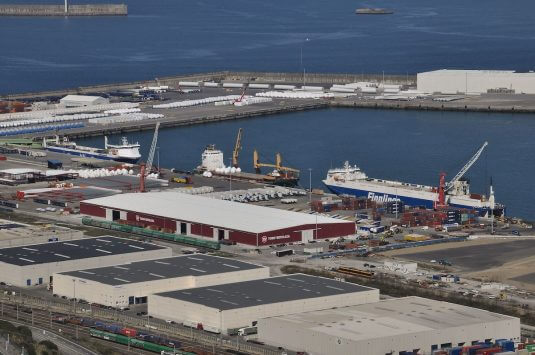The Official Spanish State Gazette published a ministerial order dated 10 May approving the new valuation of the lands and water of the Port of Bilbao’s service zone, including the lands affecting navigation aids, which is going to suppose an important reduction in the Bilbao Port Authority’s income collected from the land occupation taxes paid by leased and authorised tenants.
The last evaluation of the Port of Bilbao lands had dated from 1988, that is, previous to the Extension of the Port in the Outer Abra. Updating the evaluation has produced a decrease in the previous values, which is general for all the Port zones, and ranges from a minimum of -0.17% to a maximum of -29.76%, according to which zones.
According to the economic report on the new evaluation, Port Authority income will fall by some 1.87 million euros, about 8.11% of what is collected by this item.
This significant reduction in land occupation taxes is in line with the Port Authority of Bilbao’s Strategic Plan linked to introducing continuous reductions for users with regard to the different port taxes applied, with a view to making Bilbao a more competitive port. This recently approved initiative joins the measure that had already been in force since July 2018, when Goods Tax (T3) was reduced by 10%, which in 2018 supposed an additional saving of 1.2 million euros for Port of Bilbao customers and users.
To determine the value of the lands and waters of port service zones and the spaces affected by maritime signalling, it is necessary to calculate the amounts of occupation taxes due in favour of the Port Authority for occupying port public dominion through public dominion concessions or authorisations, since this value is the tax base for the occupation tax.
In accordance with the Law of Spanish State Ports and Merchant Navy, the value of the lands is determined based on market criteria: that is, a value is assigned to the lands by taking as a reference other lands inside neighbouring municipal boundaries with similar uses and conditions, especially those designated for logistics, commercial or industrial use.

To such an effect, the new evaluation of the Port of Bilbao service zone has been divided into five main functional areas, which at the same time are subdivided into different sub-zones. In the evaluation of the lands in each port sub-area, the following criteria have been taken into consideration: general development level of the zone; the organisation characteristics set out in the Port’s special plan; its centrality in the service zone and its proximity, accessibility and connection with the different transport modes and infrastructures, particularly with berthing facilities and sheltered water areas. In addition, in areas dedicated to goods handling, the value of Port surfaces that could provide alternatives for Port traffic has also been taken into consideration.
As it is a matter for taxation, the new evaluation has had to be an initial proposal followed by previous long administrative processing on behalf of the Port Authority. This has included public information processes and several favourable reports in order to be definitively approved by the Ministry for Economic Development and then published in the State Gazette.

 Port access
Port access